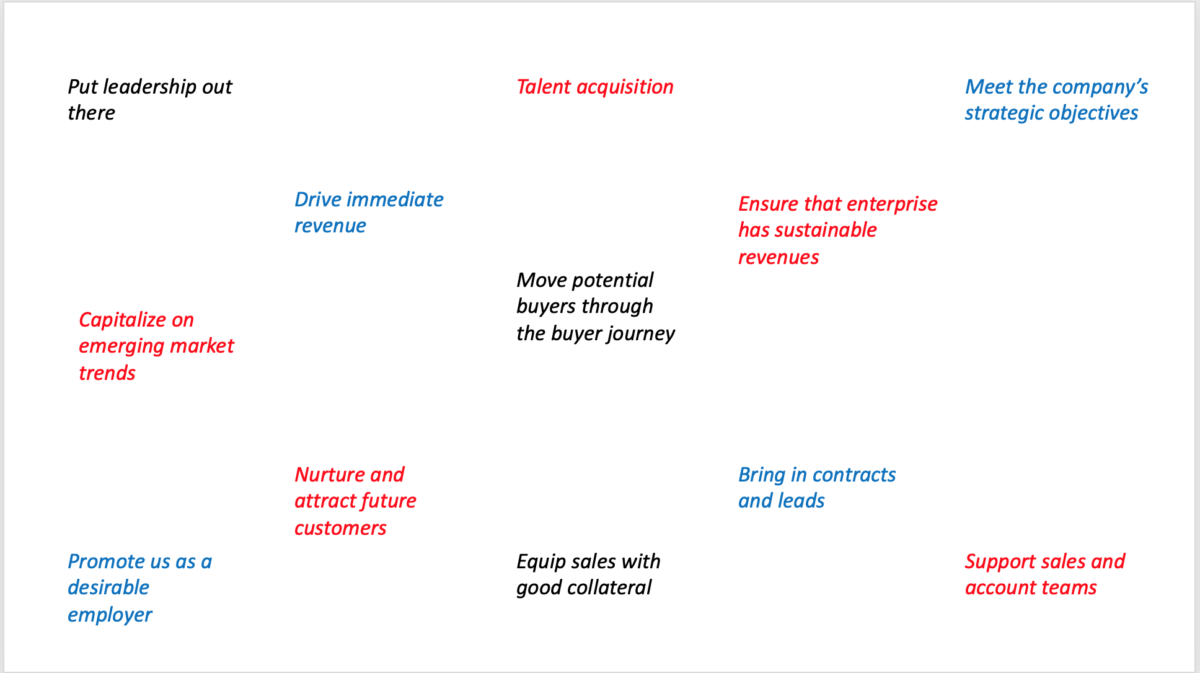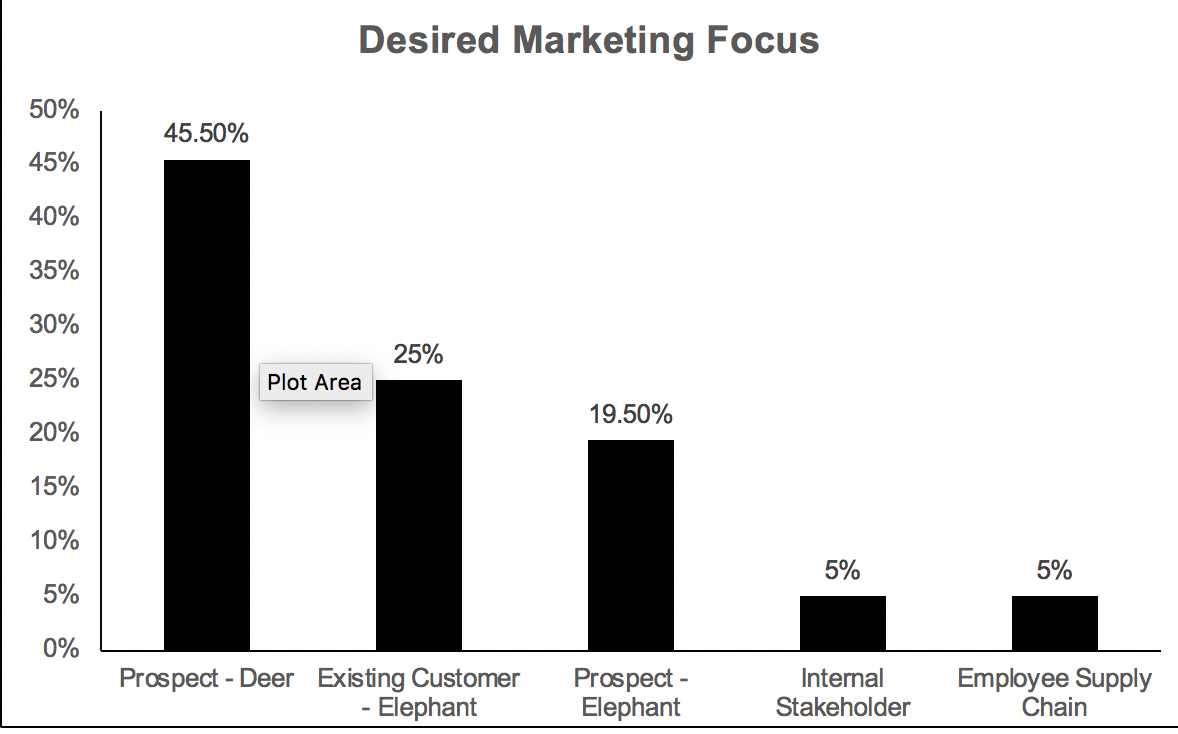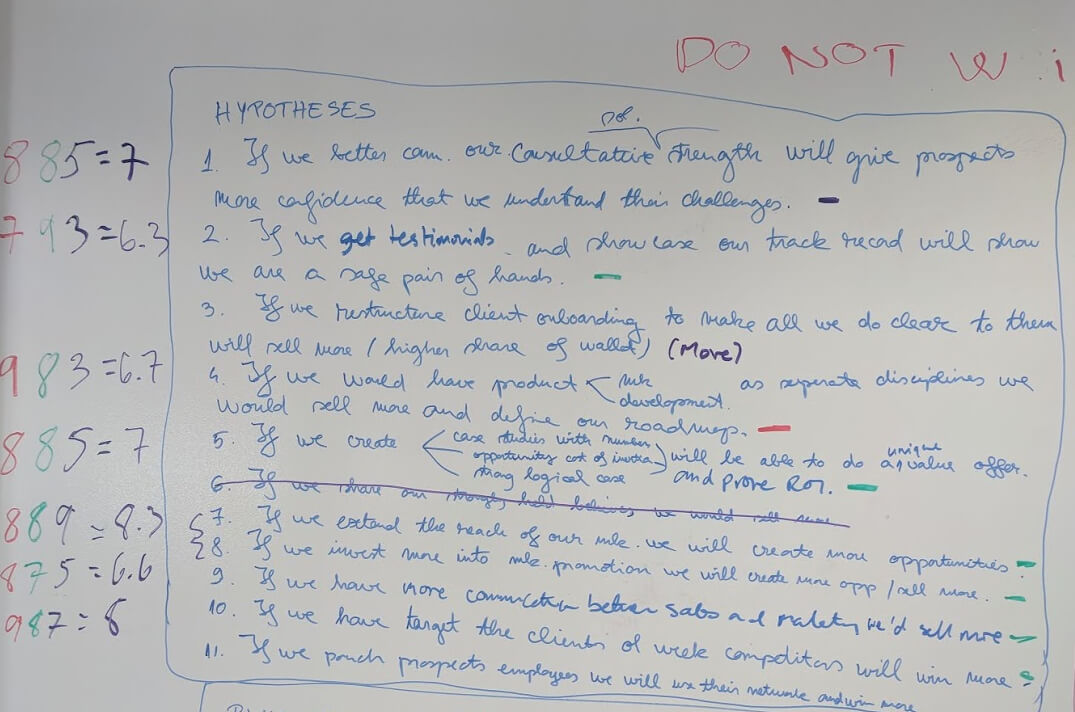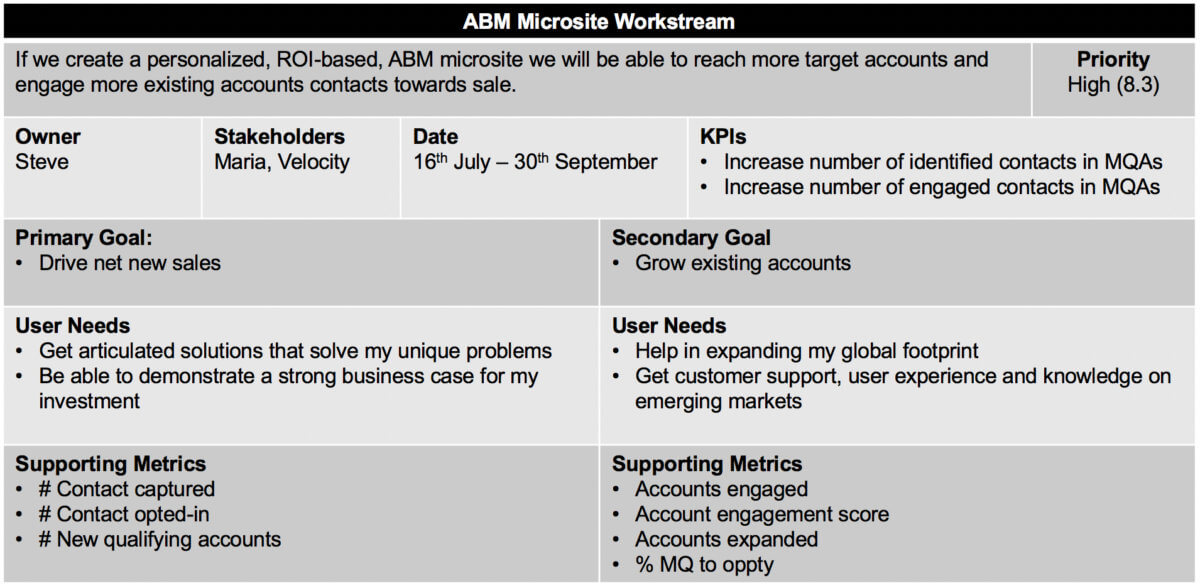How to create performance marketing KPIs in seven steps
B2B marketing teams don’t work with KPIs nearly enough.
And that’s crazy because they are – as the title suggests – key. So why do so many marketing teams skip this utterly vital stage of any marketing process?
It’s a head-scratcher. And usually a result of thinking of performance marketing KPIs as a pure data challenge. It’s not. You need to think of it as aligning your goals, users, actions and expected outcomes.
Going to your data source to find your baselines, set your target and build your reporting framework is the last step. Not the first.
Today, we’ll show you just how that works and how you can arrive at SMART (specific, measurable, attainable, relevant and time-bound) metrics with real meaning.
So let’s go ‘open robe’, in time-honoured tradition, and show you how it’s done with deck excerpts, whiteboard scribblings and quotes to show you how we make this work for our clients.
1. Engage your team
This first one’s simple. Get the people who will own the KPIs in a room. And make sure they understand they’ll be contributing their ideas rather than their “finger-in-the-air” data.
Start by getting everyone to define how they expect to run campaigns to get the ball rolling. You’ll be interested to see if these initial assumptions survive the session. (Hint: unlikely). A good way to do this quickly and efficiently is with a pre-workshop survey.
2. Define your purpose
You know you need a purpose. And we like to define it in under 30 words.
But don’t expect everyone to agree all at once. The data from the upfront survey ensures there’s no falling into the slipstream of the room’s HIPPO.
For this client, we asked: “How would you define the mission of the marketing team?” A stream of valid, but different, responses came back to illustrate how difficult it can be to achieve peak focus.

An hour later we agreed nobody would have a KPI that didn’t (forgive the double-negative) focus on an action to:
“Drive sustainable pipeline and revenue growth while creating an aggressive position, messaging and product offering to capitalise on emerging market trends and opportunities.”
3. Prioritize your audience
This goes beyond a textbook ‘put your client first’ mantra. Again it’s all about focus. Who do you need to attack first and hardest (both externally and internally)?
Our friends agreed it’s time to rebalance from prospect to account based marketing (ABM) to drive pipeline and revenue. This is a big deal. It means a different approach to content. A different approach to campaigns. And a different approach to measurement.
And that leads to this little beauty:

4. Define your goals
This bit is usually a bit easier. What do you want? But let’s do it without losing sight of what we’ve just agreed. Are your goals:
- Aligned with your defined purpose
- Aligned with your target audience
- Written in a strong and active way
In this case that became:
- Drive net new sales
- Grow existing accounts
- Become the gold standard
- Contribute to the product roadmap
These goals are simple. And, in this case, simplicity is genius. You will now question any project or activity that doesn’t directly speak to these goals. The net tightens.
5. Map your goals to user needs
This bit is usually a bit harder. It’s a struggle to think outside our own needs. So we need to force alignment between what we want and what users need.
You just won’t achieve your goals unless they’re made user-friendly.
We break up into teams and discuss the user needs for target audiences. Draw yourself a table, with a column for each of your goals.
Under each goal, put audience needs that your goal can fulfil. And question any goal that doesn’t match with user needs. It’s starting to get interesting.

6. Hypothesise and analyse
Now that your thinking cap is well and truly on, you get to start hypothesising about what actions you could take to achieve your goals and delight your users. They should follow the structure of:
“If we do X then Y will happen.”

Once you’ve got a number of hypotheses, you rate them using three metrics:
- Potential (Difference we think it will make)
- Importance (Value to the bottom line)
- Ease (Can we realistically get it done)
Note: people often get confused between potential and importance. Think of it this way: potential is the difference you can make and importance is how much it matters.
You give each a score out of 10.
- High >7
- Medium 6-7
- Low <6
For obvious reasons we call this PIE Framework Analysis. Let’s have a look at an example.

Many high potential and important solutions are hard to achieve. The type of projects that often stall and cancel. It’s important you balance the home runs with the easy hits.
7. Define workstreams
Okay, so you’ve got loads of good theories, now you’ve got to make them actually happen. We do this by creating workstreams. Every workstream is:
- Specific
- Measurable
- Attainable
- Relevant
- Time-bound
You can see where this is going.

Up top is the objective with the priority next to it. Underneath that is the person who owns that workstream (where the buck stops) and the stakeholders (backseat drivers), the date (you know, so it actually gets done). Then the discovery needed and what it’ll take to execute.
Now if that doesn’t sound like an activity designed for an accurate KPI then I don’t know what does. And if that doesn’t look like the basis of a data-infused creative brief then I know even less.
Wait, where are the numbers?
We will go into the actual data capture of performance marketing KPIs to be plugged into our workstream in our next post. We will dig out the data to show how it can be applied for accurate content reporting (and more effective content campaigning).
The important thing is you do this part first if you want them to be successful. Because the numbers depend squarely on what you’re going to do. And success depends on everybody’s understanding of why it matters.
We’ll see you for the next instalment soon.
The Content Performance series;
Post 1: What is the future of content marketing?
Post 2: How to create performance marketing KPIs
Post 3: Tool Choice: How to pick a marketing automation tool

Enjoyed this article?
Take part in the discussion








Comments
There are no comments yet for this post. Why not be the first?